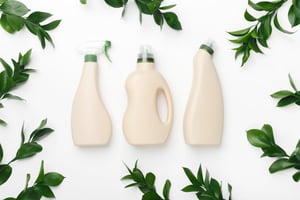The global spread of COVID-19 has caused a surge in the use and consumption of disinfectant...
5 Elements of Barrier Packaging Design
Behind the visual appeal of product packaging, there are many factors to consider when designing barrier packaging to meet or exceed the technical global packaging standards. The barrier packaging option you choose for your product can impact the quality, flexibility, safety and compliance of your end product.
Below are five important elements to consider for your barrier packaging design.
1. Formulation ingredients
Most formulations are a mix of active ingredients, emulsifiers, solvents, flavors and fragrances. Depending on the formulation, and whether it is water-based or organic, you will need a certain level of barrier protection to protect against permeation. More powerful active ingredients or solvents will require a higher level of barrier packaging to prevent ingredient loss and preserve both the product and the package.
For example, thymol, which is approved to fight COVID-19, is present in low concentrations (<0.5%) in disinfectants, and it can still be scavenged (loss of an ingredient to the plastic or environment) by a package to the point where the disinfectant becomes ineffective. It’s crucial to inhibit the scalping of active ingredients to protect the quality and integrity of the product.
2. Shelf life requirements
The design of your packaging will be centered around the specific shelf life needs of your product. These needs can stem from regulations, performance expectations, duration of effectiveness or brand appearance. Depending on the chemicals that need to be contained or protected against degradation from leachables, treatments can be varied to achieve the desired shelf life–from a few months to a few decades.
3. Freedom of packaging design
With the latest technology, you can create barrier packaging out of any molded shape. The barrier is applied after molding, giving all areas of the package a uniform barrier regardless of the complexity of the shape, narrowness of the opening or sharp corners. Coextruded packages are often limited in their design as two uncommon polymers have to be blown and glued together. This marriage of dissimilar polymers limits the shapes that can be molded and the functionality of them. However, Enkase™ can meet barrier needs without affecting the bulk properties of the polymer, leading to no changes in drop impact, top load or recyclability. This results in true design freedom.
4. Regulatory requirements
Regulations and product stewardship goals aim to reduce the risk of impact on human health and the environment. Barrier packaging safety and compliance regulations ensure contents don’t permeate through container walls. However, these regulations can vary significantly. For example, while the U.S. Department of Transportation (USDOT) regulations permit up to 2% weight loss for compliance, many manufacturers require much better performance. Cross-examine the packaging regulations in your region to ensure your product is up to code.
5. Packaging material
The material choice of your packaging can impact the performance of the product. Every polymer has its own unique set of characteristics. For example, some can be clear and others can only be opaque, some are better for injection molding than blow molding, and some have better drop impact properties. As you make a packaging decision, you should consider all of these factors along with the need for a variety of barriers, whether it’s for oxygen, CO2, solvents or water. Beyond shelf appeal and functional considerations, you should also consider the full lifecycle of your product’s material. Is it easily recyclable? What is the carbon footprint of your package? At Inhance Technologies, we’re passionate about sustainability and we believe in using recyclable barrier packaging.
Want to learn more about the standard in recyclable barrier packaging? Download our Barrier Packaging Ebook to find out how to protect your products with peace of mind.


